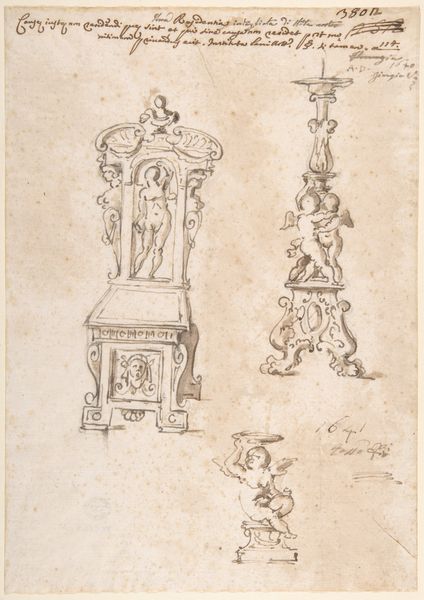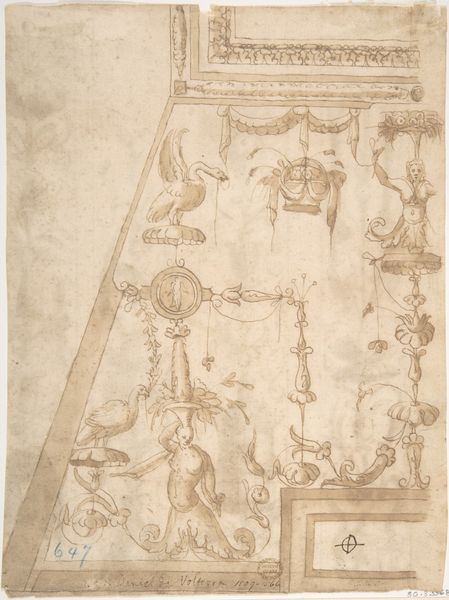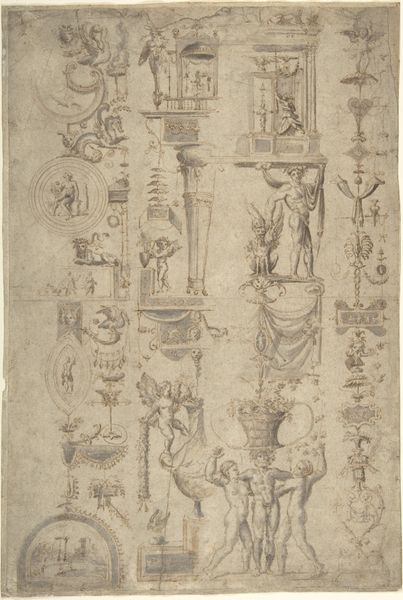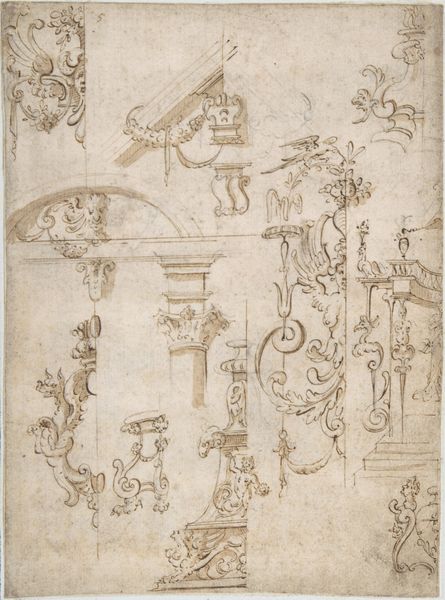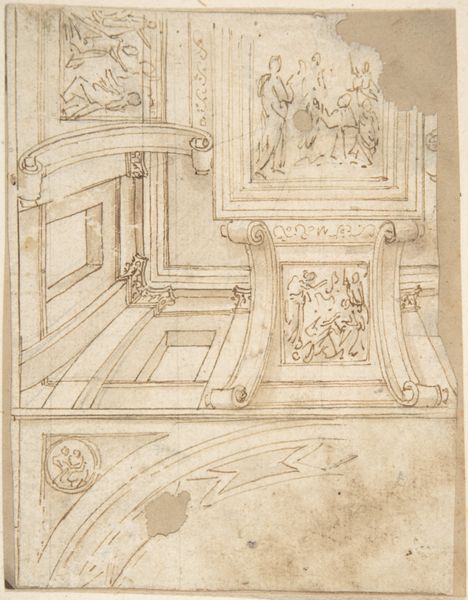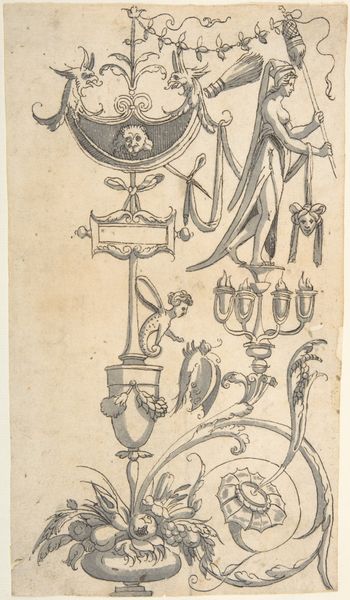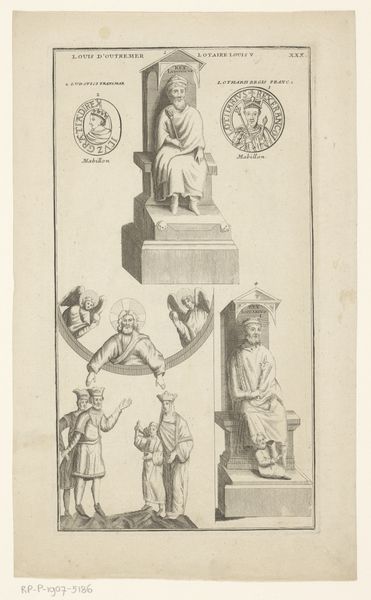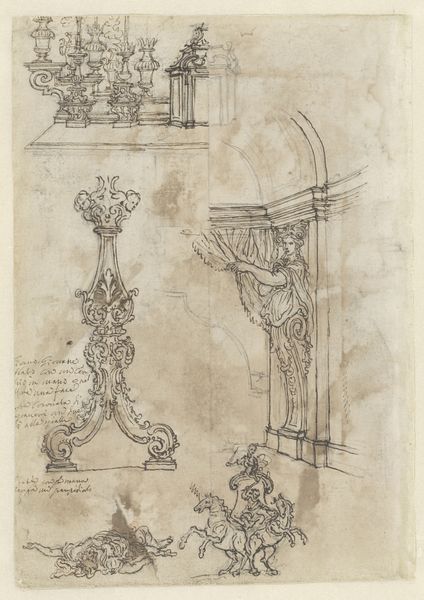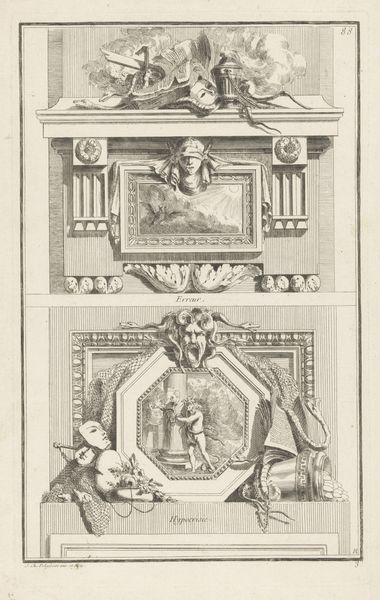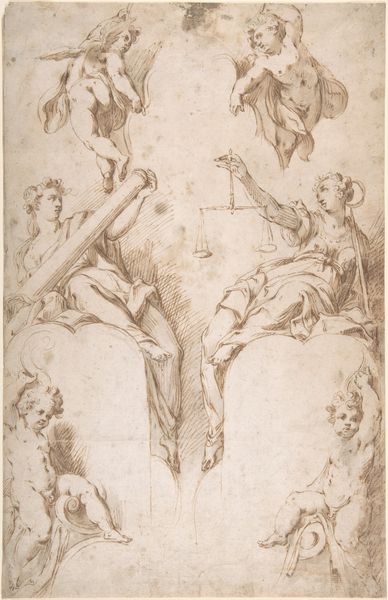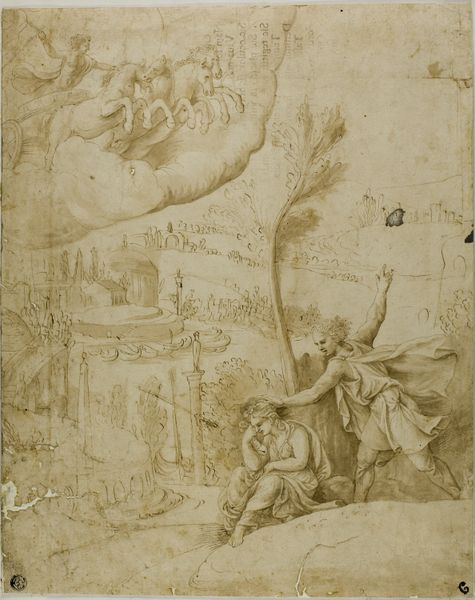
drawing, paper, ink
#
portrait
#
drawing
#
classical-realism
#
paper
#
11_renaissance
#
ink
#
history-painting
#
academic-art
Copyright: Public Domain: Artvee
Editor: Looking at Nicolas Poussin's "Studies of Antiquities" from 1645, done in ink on paper, what strikes me is its fragmented, almost archaeological feel. It's like looking at the scattered pieces of a civilization. What stands out to you as you examine this work? Curator: Indeed. Poussin, like many artists of his time, was deeply influenced by classical antiquity, but the lens through which he saw it was colored by the socio-political climate of 17th-century Europe. This wasn't simply admiration; it was a way to legitimize power. Do you notice how he meticulously renders these fragments? It is almost like he wants to revive an entire worldview. How do you think the arrangement of these pieces impacts how a contemporary viewer would understand classical antiquity? Editor: I see your point. It isn't just copying ancient forms but selectively curating them, as if designing a stage. Could this drawing serve more than as just study; was it perhaps meant as a statement of authority? Curator: Precisely! Think about the patrons of art during Poussin's time—aristocrats, the Church. Their commissions and tastes shaped artistic production, directing artists to present antiquity in a way that bolstered their own status and narratives of power. This drawing participates in that conversation. Does seeing it that way change how you perceive its academic, almost clinical style? Editor: It definitely does. It shifts from feeling like a neutral record to an active participant in constructing a particular version of history, reflecting the desires of the elite. I hadn't considered that Poussin's hand was also a political one. Curator: Understanding the forces at play – the patrons, the institutions, the prevalent ideologies - gives us a much richer view of seemingly straightforward artistic endeavors. Editor: Absolutely. Now, the fragmented feel speaks less to just 'lost' civilizations and more to how they are deliberately reconstructed for present-day purposes. Thanks so much for sharing your perspective!
Comments
No comments
Be the first to comment and join the conversation on the ultimate creative platform.
